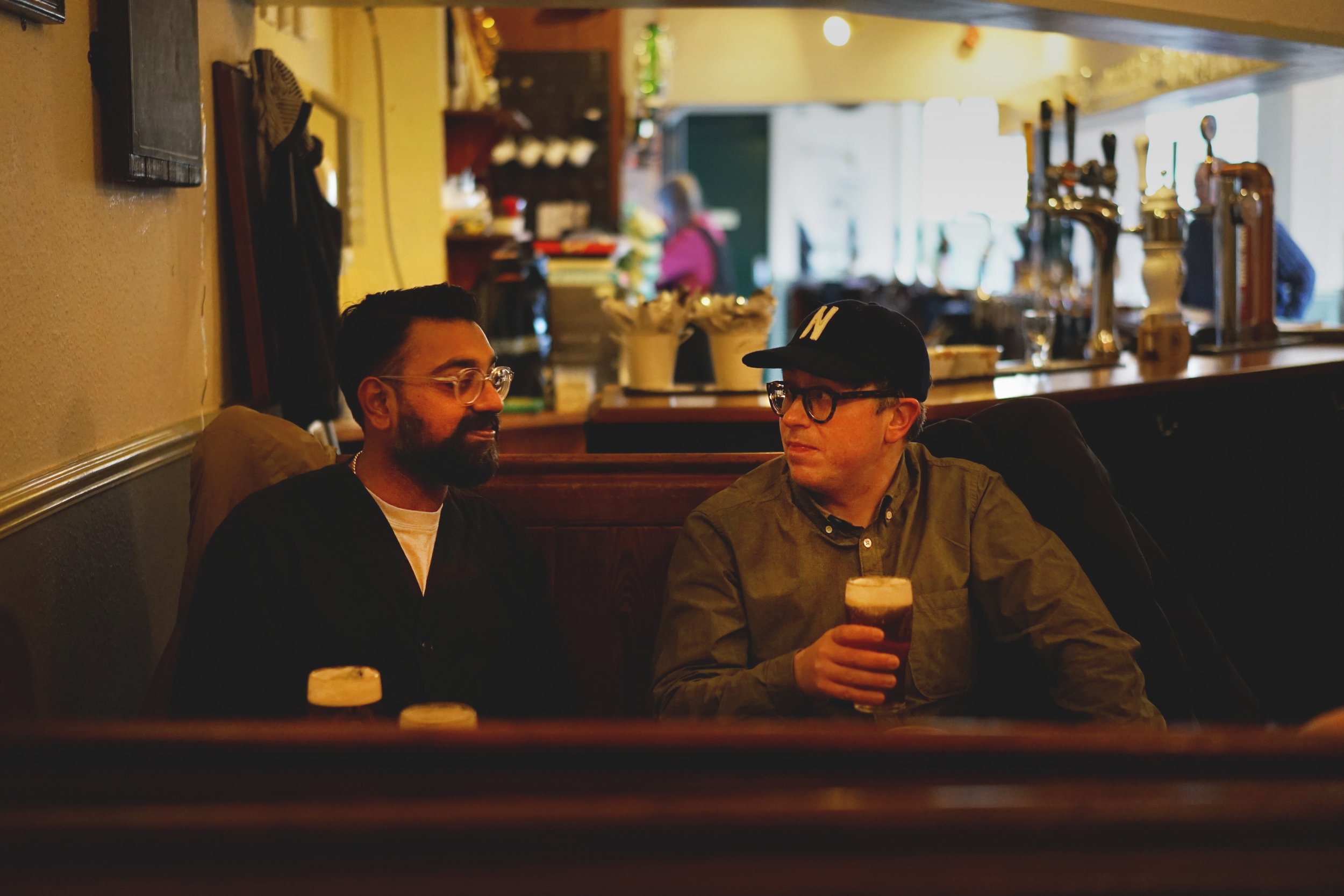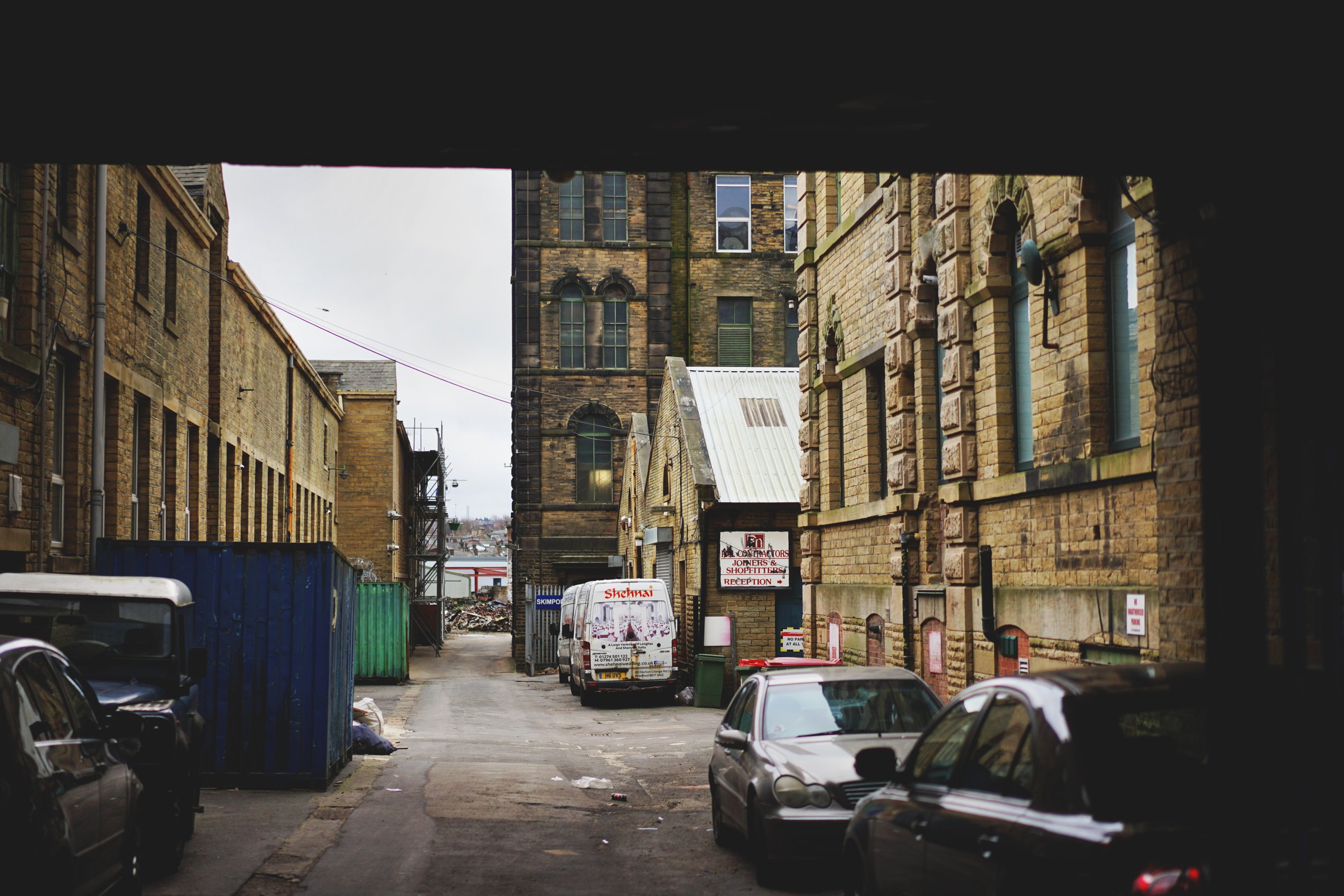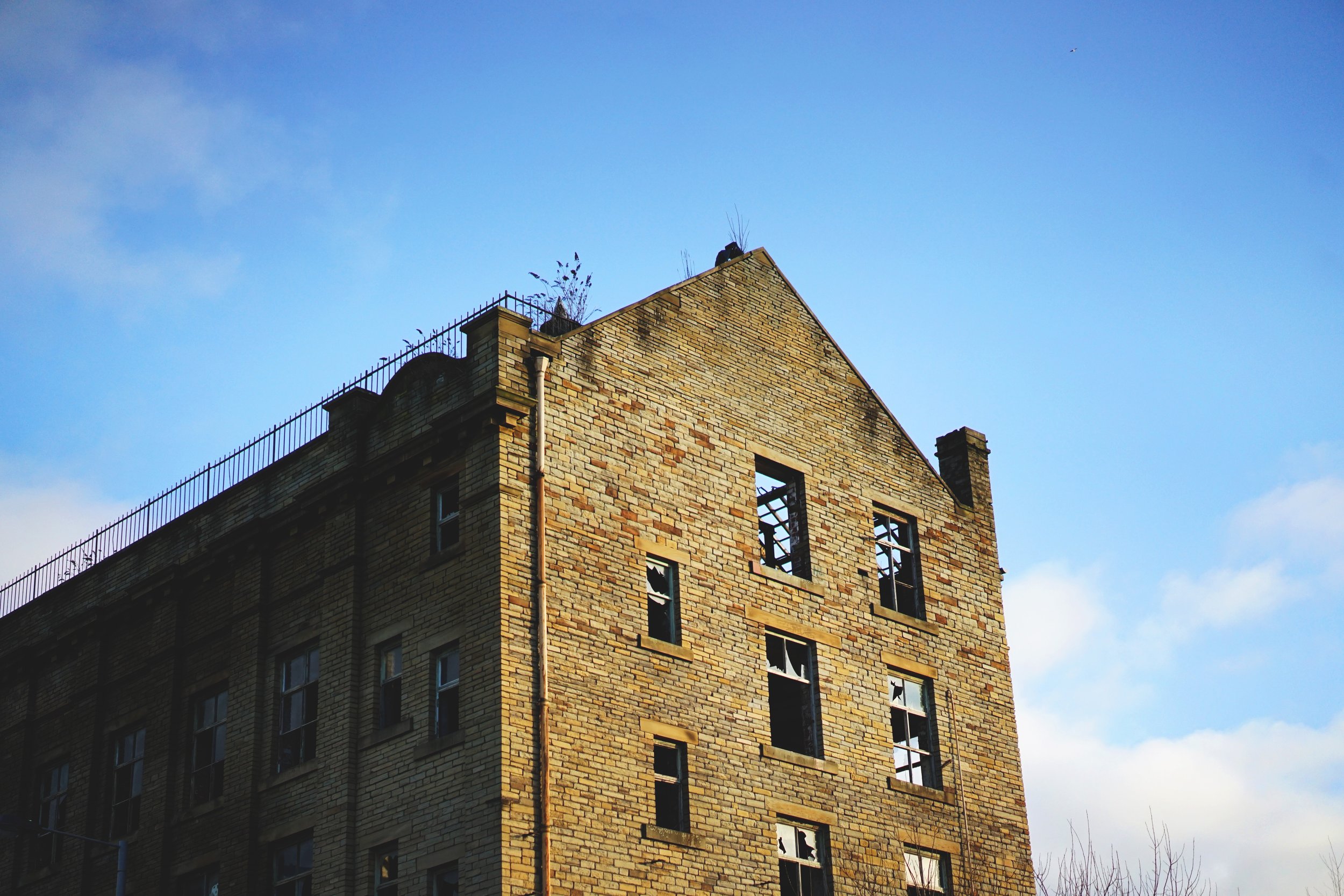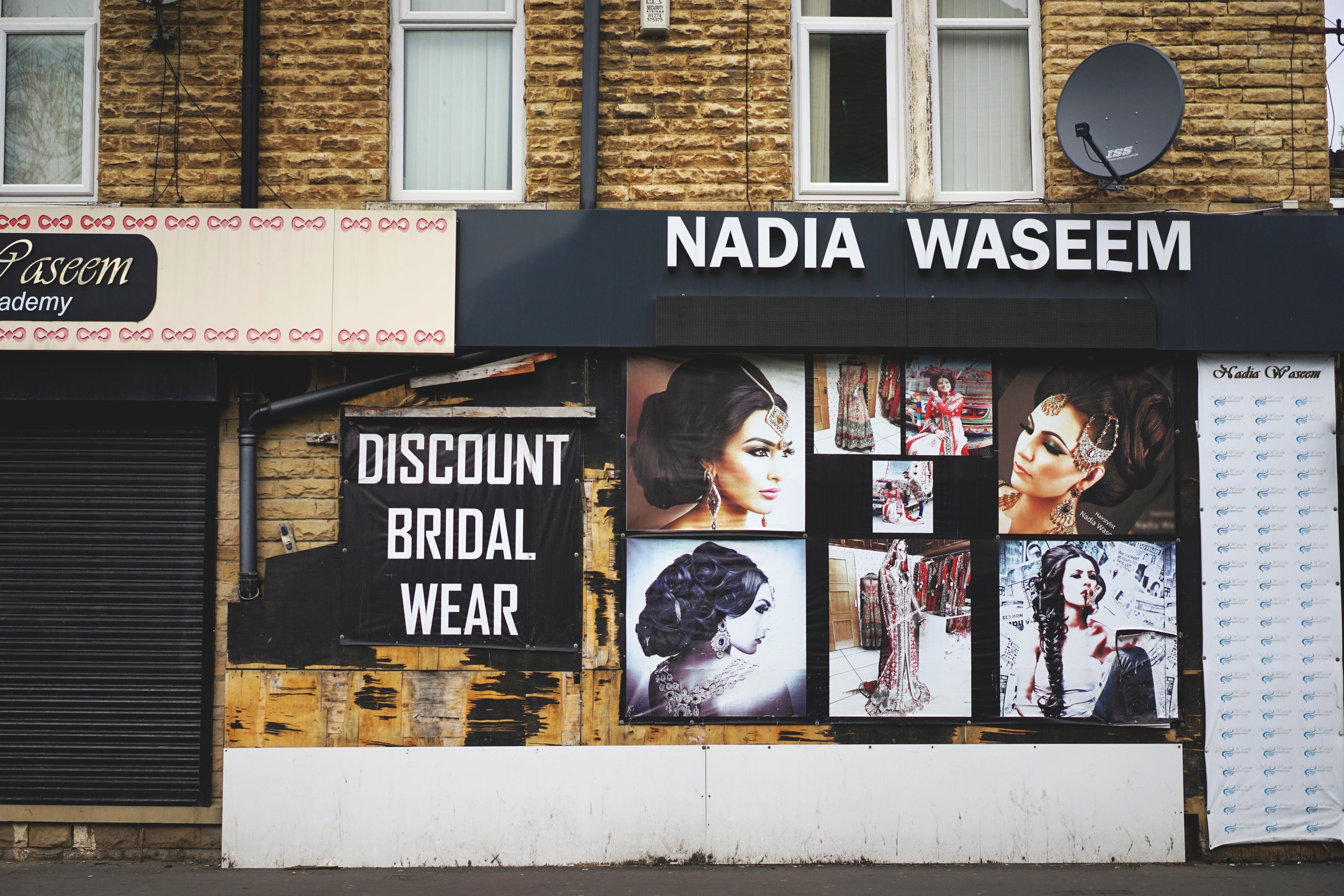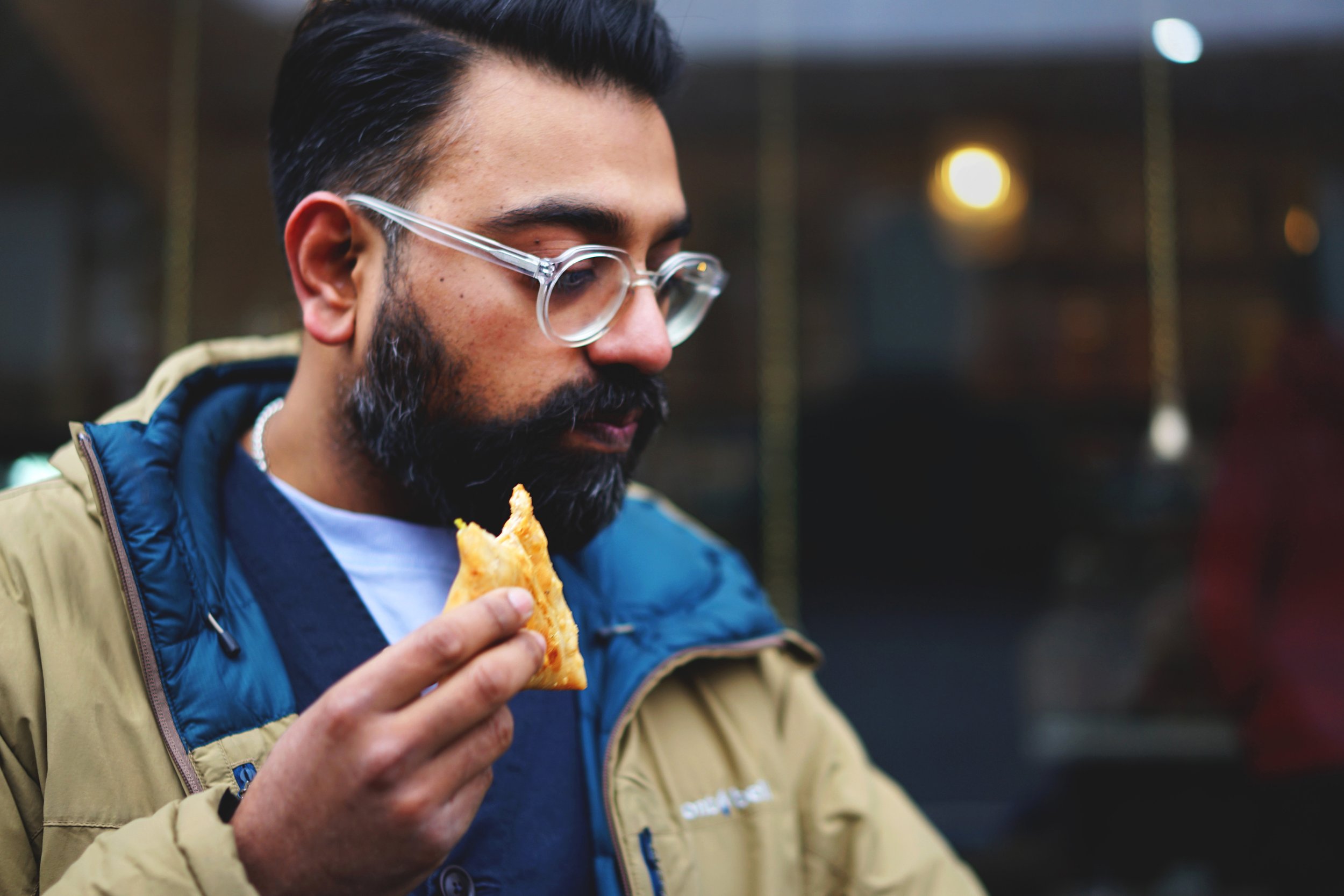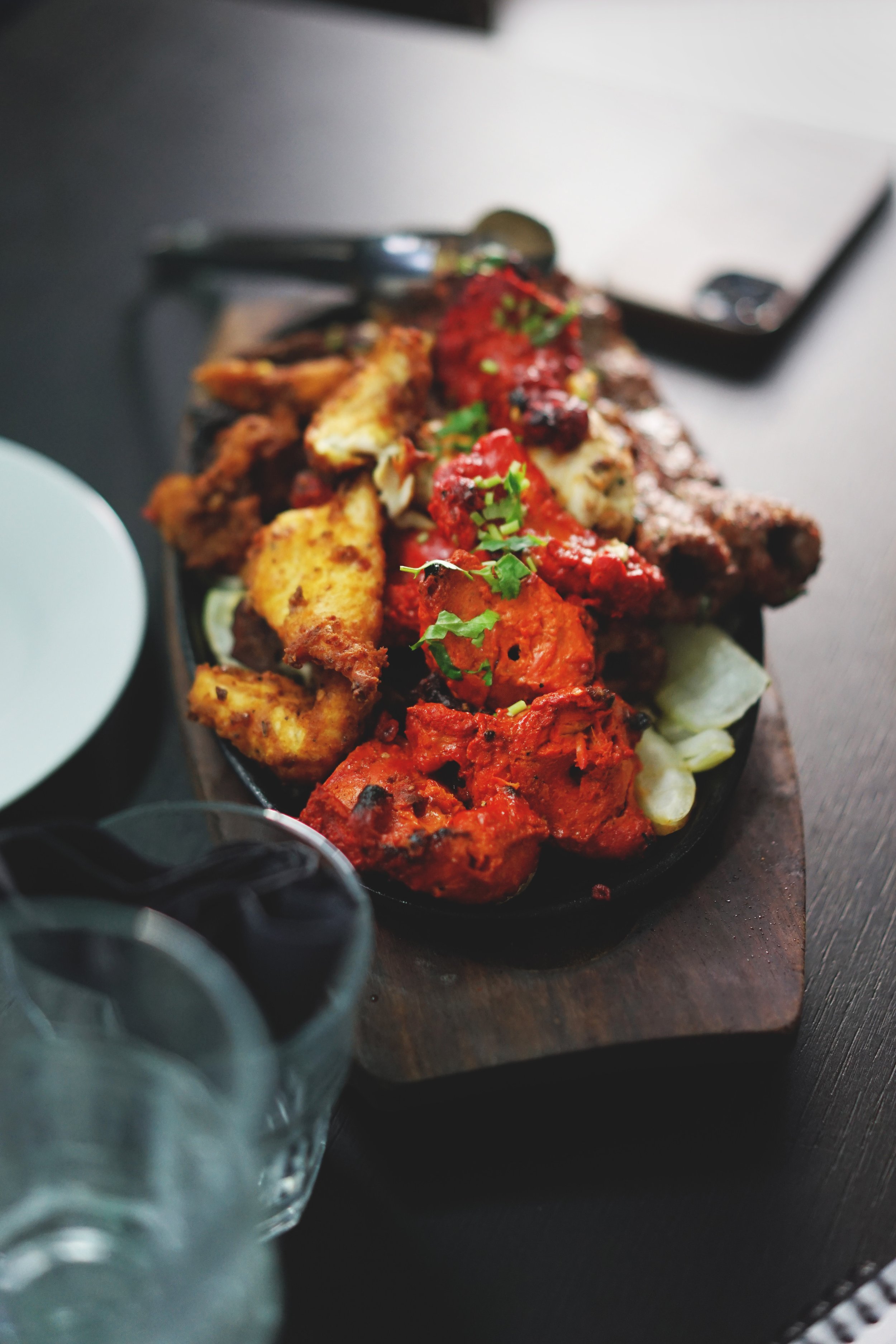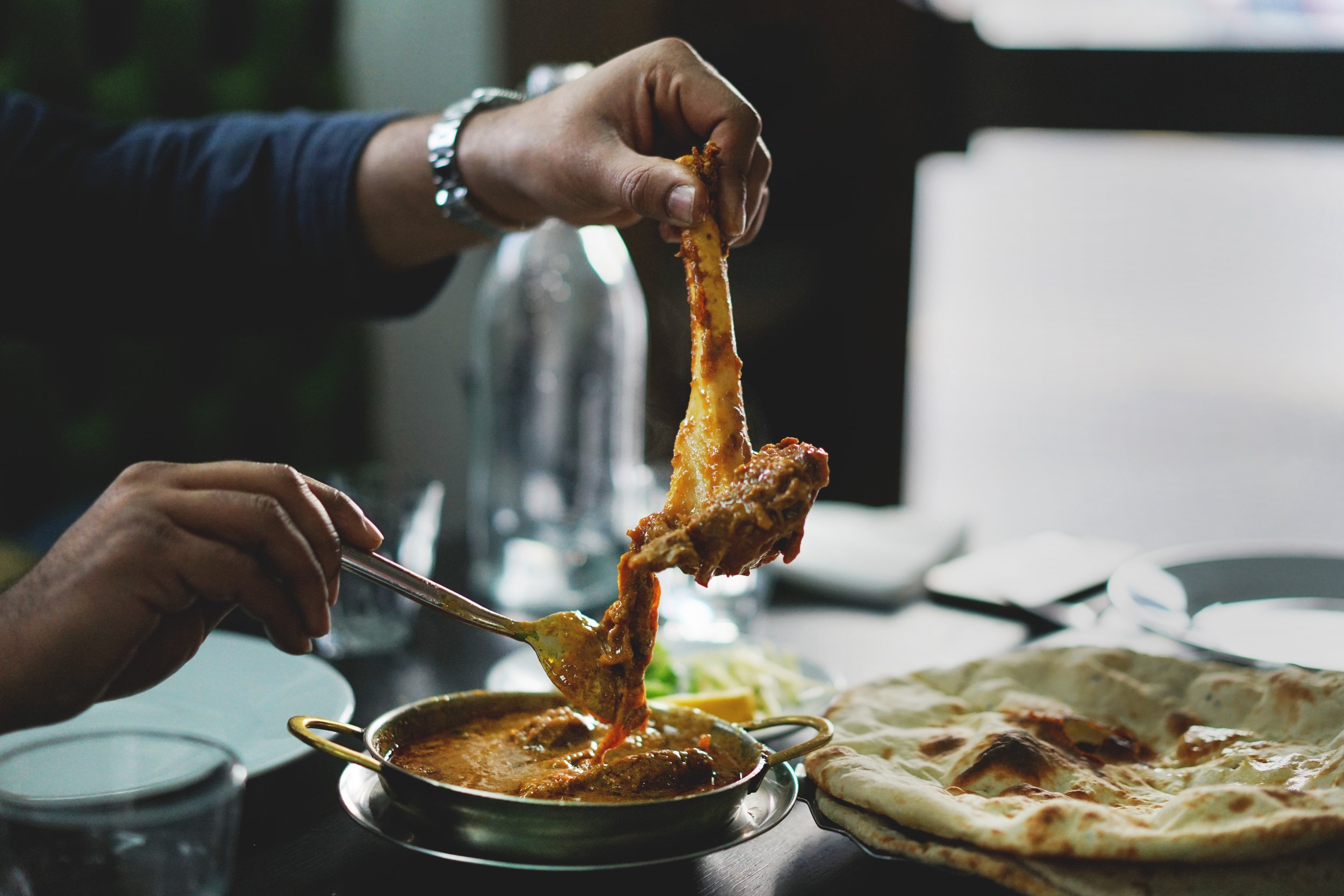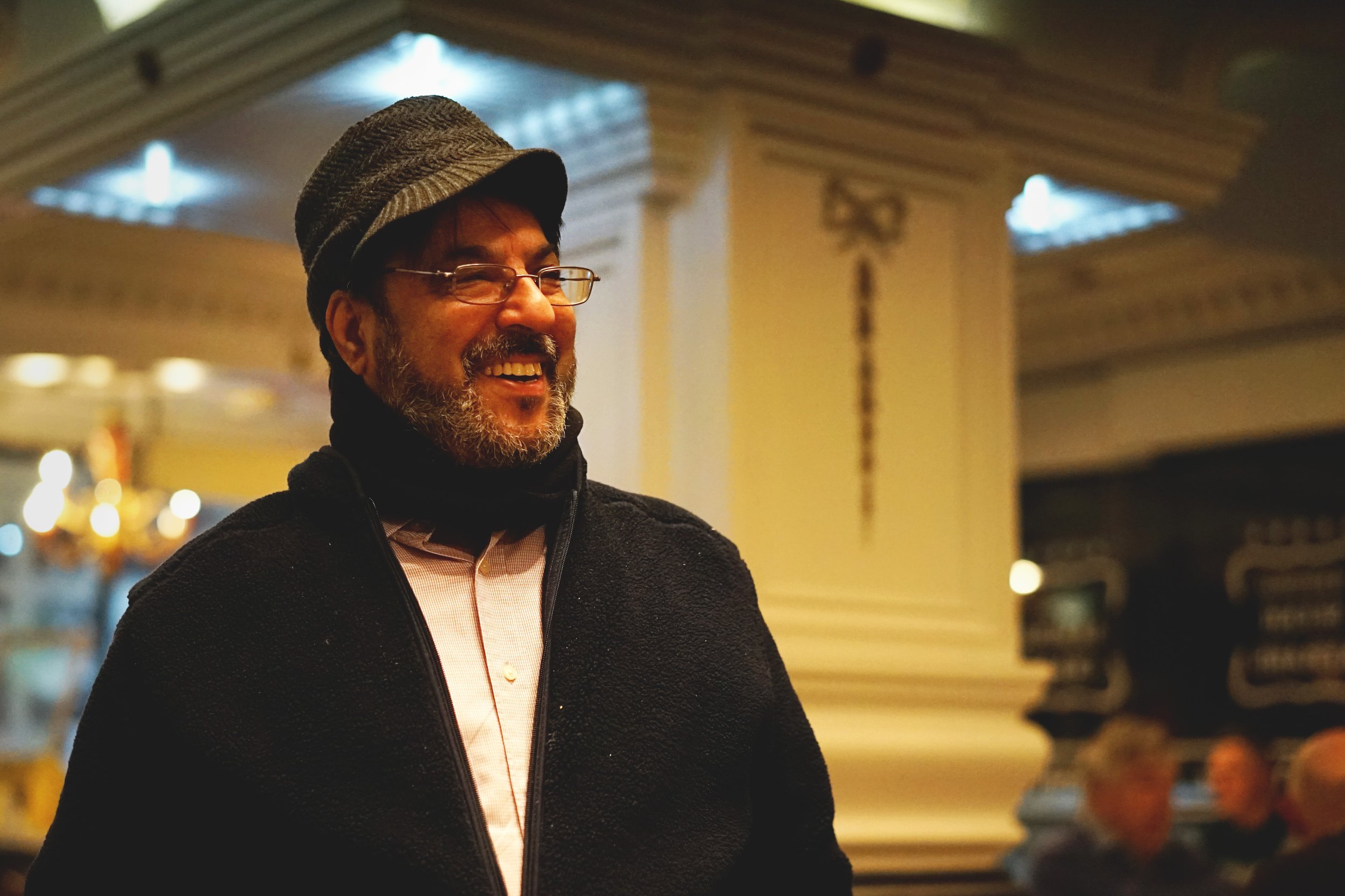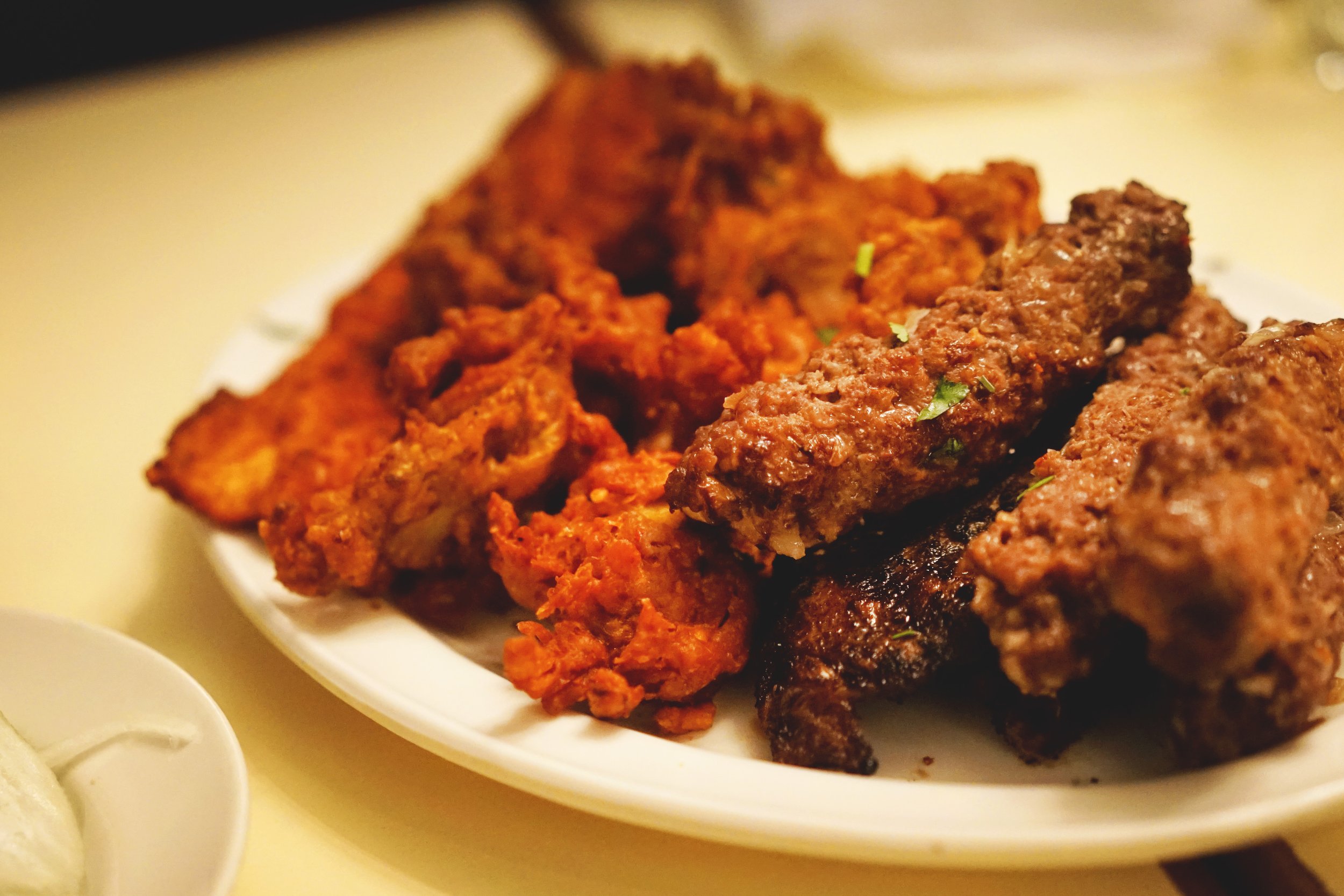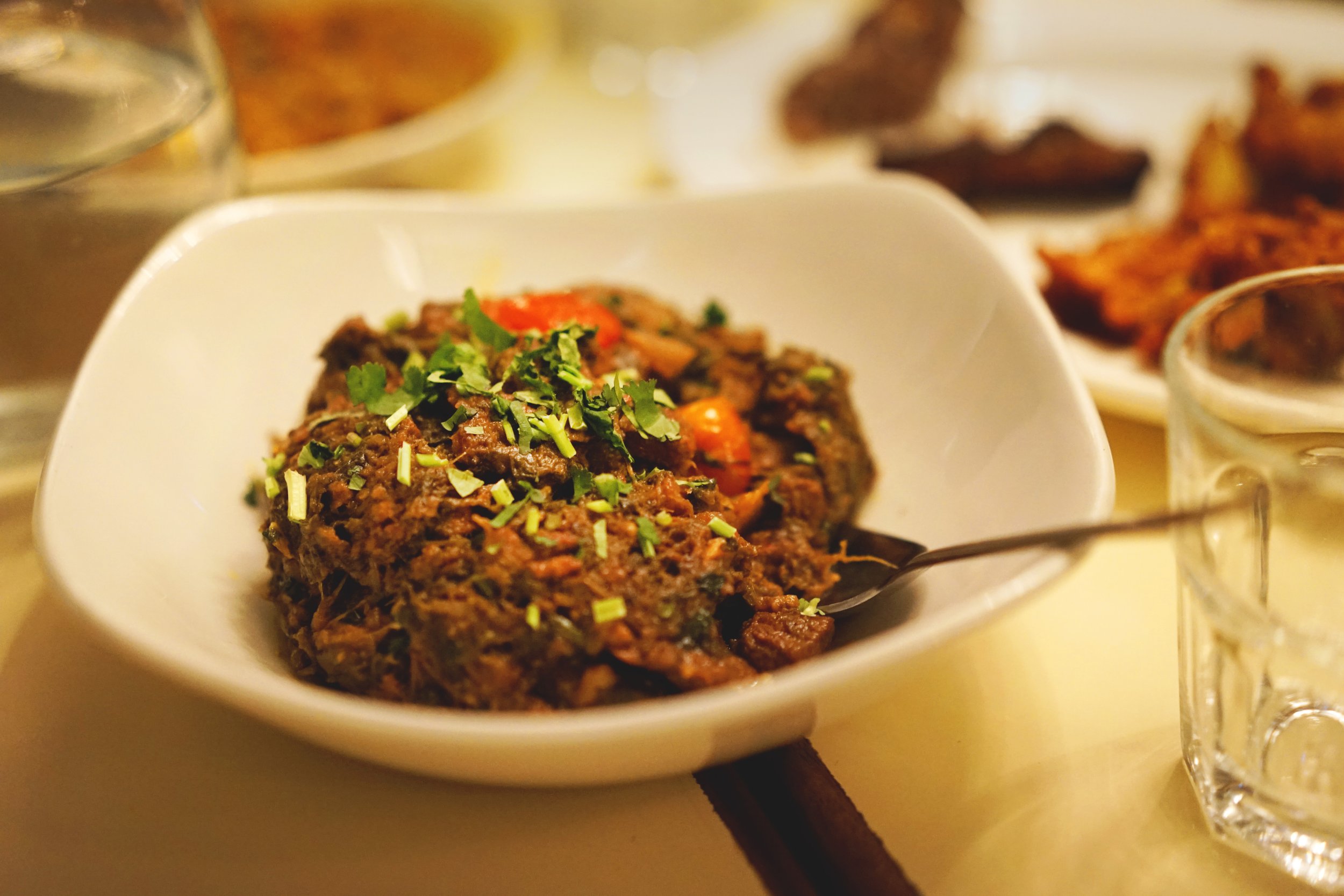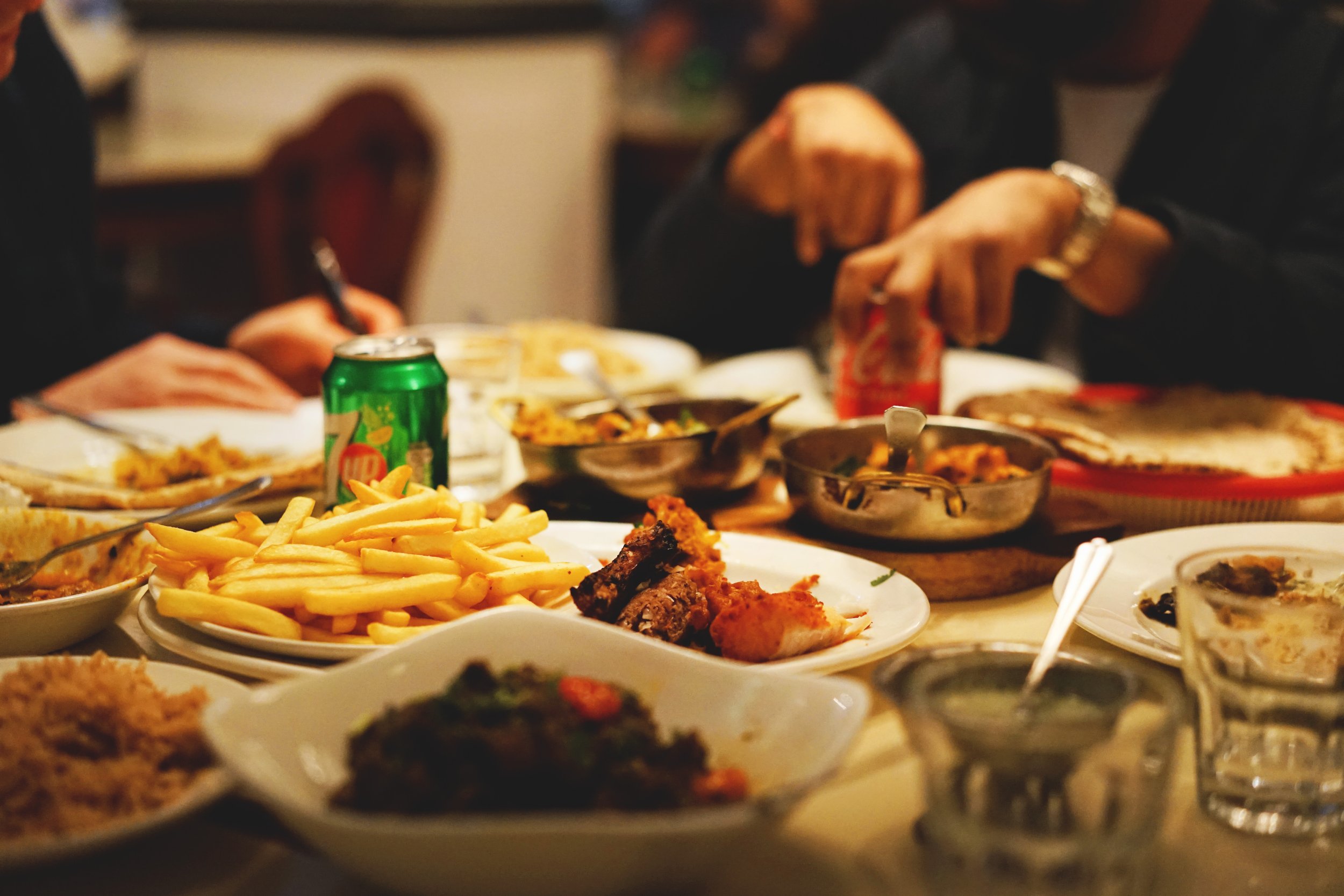The Spice of Life — How Bundobust Emerged from Bradford’s Rich Cultural Heritage
After a long day on his feet, Marko Husak has found what he’s looking for.
Spread out in front of us on a large table at the Sweet Centre, a restaurant in Bradford, West Yorkshire, is a Kashmiri feast: chana puri, lamb karahi, biryani, daal, naan and—most crucially—chicken karahi. “That’s the taste of Bradford,” Marko says, emphatically, gesturing at the round metal bowl in which the last dish, sprinkled with coriander, has been served.
Photography by Matthew Curtis
My ears prick up. We’ve spent a frost-bitten Friday seeking the taste of Bradford and it seems, at the last moment, we’ve hit the mother lode. This is it; the dish that sums up a metropolitan area home to 535,000 or so souls.
Well, maybe. In one sense, Marko is obviously right. Chicken karahi, a rich, tangy, pleasantly hot curry from northern Pakistan, is entirely representative of the food you’ll find in modern Bradford, where Kashmiri cuisine dominates. In another sense, though, he’s missed the mark. It’s impossible, surely, for a single dish to sum up a city where waves of incomers, beginning in the 19th century, have made an impact.
Marko, 38, and Bundobust co-creator Mayur Patel, 35, are part of this tradition. Born and bred in Bradford, their family roots are distant; Marko’s in Ukraine, Mayur’s in Gujarat, India. This rich blend of shared history and culture is why Bundobust—which now has restaurants in Leeds, Manchester and Liverpool, as well as its own brewery—is among the most distinctive businesses to have emerged from Britain’s recent brewing renaissance.
In a culture characterised by the aping of American beer culture (taprooms, IPAs, baseball caps and unkempt beards) or a retreat to eternal verities (pubs, cask ale) Bundobust is something different. Its combination of delicious, vegetarian Gujarati cuisine with beer—cask, keg, ale, lager, stout, mild, any sort of beer—is distinctly modern Britain.
The same could be said of Bradford, the UK’s most overlooked metropolis. When outsiders consider this West Yorkshire city, they might think about curry, closed mills, or even racial strife. But there are layers of history and culture here that defy such basic categorisation. Bradford has its problems—that much is clear to anyone with eyes to see—but it also has its treasures, and many of them are delicious.
That’s why I’m here, with Marko and Mayur, on a freezing January day; to untangle the threads that created Bundobust, and to find out more about Bradford and its food. Oh, and to have a few beers, too.
***
When the author J.B. Priestley returned to his native Bradford in 1933, he was disappointed. Writing about the city for his travelogue, English Journey, he noted that it was not the cosmopolitan place he had known before the First World War.
“Bradford was always a city of travellers,” wrote Priestly, who was born in Bradford in 1894, and grew up in the suburb of Manningham. “Bradford was determinedly Yorkshire and provincial, yet some of its suburbs reached as far as Frankfurt and Leipzig. I liked the city better [then]… it seems smaller and duller now.”
By 1933, Bradford had been a magnet for incomers for 100 years, since it emerged in its modern, industrial form in the first half of the 19th century.
“The natives of Scotland are here, the natives of Ireland are here, from the pleasant vales of Devonshire men and women have come: from the banks of the Rhine and the Elbe they are coming,” wrote Reverend Jonathan Glynde, Minister at Horton Lane Congregational Chapel, in 1835.
They came to work in Bradford’s mills. The city, blessed with everything needed to be a textile powerhouse (sandstone for building, nearby deposits of iron ore and coal, for machinery and power, and soft water free from lime, perfect for washing and dying wool) became known as the “wool capital of the world,” and its elite grew rich. “There is nothing that cannot be spun and woven that does not come to Bradford,” as Priestly put it.
The city’s best architecture reflects this gilded age. The City Hall, The Wool Exchange (built in the 1860s, it is now a Waterstones; even in a country not short of delightful bookshops, this must be a contender for the loveliest), the gentle sweep of the delightfully-named Hustlergate. Little Germany, a neighbourhood in the city centre, is named for the merchants, many of them Jewish, who helped build the city’s wealth in the 19th century; Lister Park, to the north, commemorates industrialist Samuel Lister, one of its most famous sons.
As long as the textile industry powered on, immigrants arrived. Italians, more Germans, a wave of Jews fleeing persecution in Russia—and then, after the interwar lull that disappointed Priestly, thousands from Eastern Europe, and many more from the Indian subcontinent.
Marko’s grandparents were originally from the region around Lviv, a city in Western Ukraine, close to the modern-day border with Poland. During World War Two they were forced into service by the Nazis—grandfather Myhajlo, for example, worked in a munitions factory in Dresden. When the War ended, they were “displaced persons”; taken from their native land by force, but unwilling to return while it remained under Soviet control.
In the late 1940s, Britain agreed to accept around 200,000 Eastern Europeans to fill labour shortages in industry. Most Ukrainians headed for Manchester and Bradford, where they joined Polish, Latvian, Estonian and Lithuanian immigrants in the city’s mills.
Mayur’s parents came later, in the 1960s, to a city that was changing rapidly. Thousands from their native Gujarat, in India, and from Pakistani Kashmir were arriving to work in the mills, but the local textile industry, beset by fierce global competition, was already in serious decline.
***
There are five of us standing on the corner of Horton Grange Road and Woodgate Road, a mile or so south-west of the city centre: Marko, Mayur, David Bailey (Bundobust’s marketing man and ace illustrator), Pellicle’s Matthew Curtis, a camera around his neck, and me. We’re staring at a street-corner shop, now home to a hairdresser called Nadia Waseem. But for Mayur, it means much more than that.
“This feels weird,” he says.
This is where Prashad, a Gujarati sweet and snack shop turned award-winning restaurant, was based from 1992 until 2012. Mayur grew up upstairs. The restaurant was set up by mum Kaushy and dad Mohan after the latter’s mechanic shop was subject to compulsory purchase by the University of Bradford, which needed the land for student flats. It was then they decided to turn a laundrette (“Posh Wash”) into a place where the Gujarati community in Horton Grange could find a taste of home: samosas, Indian sweets, dhokla (steamed savoury lentil sponge) and Bombay mix, among other treats.
“It was like a co-op,” laughs Mayur. “When they started they used to basically give the food away. 20p for a samosa!”
Prashad quickly gained a local reputation for excellent food, but it was in 2010 that everything changed when it finished runner-up in the TV show Ramsey’s Best Restaurant. Gordon Ramsey, then at the height of his fame, loved Prashad (there’s a clip of him on Youtube cooing with delight as he finishes off a portion of cholé, a chickpea curry) and suddenly there were queues out the door, demand far beyond what the 22-seat restaurant—run largely by family members—could deal with. In 2012, Prashad, now operated by Mayur’s brother Bobby, and Minal, his wife and head chef, moved to a new site in Drighlington, a suburb of Bradford.
Mayur hasn’t been here in 10 years, he thinks, but the memories are fresh. Diwali street parties catered by his mum (“a really, really good cook”); throwing his sister Hina’s CD collection out of the upstairs window after a row; cricket and football games in a nearby backstreet.
“This was a bit of a rough area [when I was growing up] but it was really diverse,” he says. “We had Indian kids, Pakistani kids, Irish kids—lots of different cultures and religions. There was always that desire to move on, but it was a nice place to grow up. I really enjoyed it.”
““The fundamentals of what makes Prashad great, makes Bundo great.””
It’s one of those neighbourhoods—like Whitechapel in London, perhaps, or New York’s Lower East Side—defined by successive waves of immigration. People arrive, and then, when they can, move on. Mayur’s parents now live in Clayton, a leafy Bradford suburb; Prashad, driven by Minal’s superb cooking, is pushing hard for a Michelin star.
Marko has roots here, too. His mum grew up on St Margaret’s Road, he says, and nearby is the Ukrainian Club, where we’re heading now, munching on samosas and dhokla, Mayur’s favourite, bought from Gujarati Kitchen, a new place along the road from the old Prashad. The club is closed (Marko curses himself for not arranging a visit) but we have a nose around outside anyway.
It’s a grand structure, the former home of a mill owner, bought with the pooled resources of the Ukrainian community in the 1950s. Marko’s grandfather worked here as a barman on evenings and weekends, he says; it was a vital community asset then, but fewer young people come now.
“You don’t need to come to the club to feel Ukrainian,” he says. His passion for Ukraine is reflected in the miles he covers to support the national football team, alongside other members of the diaspora from around Europe.
Marko remembers Polish vodka being served here when he was younger; it was hard to get Ukrainian things then, but they serve Ukrainian drinks now, sometimes even craft beer from Varvar Brewery in Kyiv. Mayur has memories here, too—he came to weddings and Bhangra parties at the Ukrainian Club in his youth, before the pair knew each other. The threads overlap.
***
Bradford is a city of flavours. Cafe Candia, nearby on Legrams Lane, is one of the first places a teenage Mayur ate meat, lured in by the aroma of fry-ups; Pizza Pieces, in the city centre, is where Marko used to pay £1 for a slice (“It’s 3.20 now! How big is the slice? Oh, it’s a good slice”); there’s the Seabrook crisp factory (“You could tell which flavour they were making by the smell on the breeze”); and The Fighting Cock, a pub perhaps ten minutes’ walk downhill from the Ukrainian Club, where Marko first tried cask ale.
“I used to come here because they had Budvar on draught,” he says. “Then one day I tried Jaipur.”
Today, just after 12pm, it’s busy-ish—15 people, perhaps—a reflection of its reputation rather than a passionate local following. It’s a simple place: wooden floors, breweriana on the walls, and the beer—Timothy Taylor’s Landlord and Boltmaker—is perfectly conditioned, lacing clinging to the inside of our glasses despite (remarkably) the lack of that Northern staple, a sparkler. We’re on our second pint (I drink Boltmaker, a beer for which the term balance is perfect but also utterly inadequate) when Marko notices the time. We’d better move on, or we won’t get everything done.
Just up the road is the Punjab Sweet House and Grill. Marko takes charge of the menu, ordering dishes in discussion with Mayur and Abid Hussain, who bustles over to take our order. Abid insists he’s not the owner—the restaurant belongs to his son, taking an order at a nearby table, he tells us—but I’m sure he’s pulling our leg. Whatever, he’s a man with impressive chat and strong opinions, particularly when we get onto classic Bradford curry houses.
“There are only five great family restaurants left,” he tells us. What is a family place? “Not a fashion place, not a place for Instagram pictures.” The decor in Punjab is pretty instagram-friendly—a water feature, plastic flowers up the walls—but we let it go. Which are the five? International, Punjab, Kashmir, Sweet Centre, Sheesh Mahal. What about the Sultan, someone asks? OK, there are six.
“The food that you eat in Bradford, the Pakistani curry, is of Bradford,” Marko says. “It’s like a Chicago hot dog, or Mexican food in LA. I eat a lot of curry, and it’s hard to find a meat-based Kashmiri curry like you get in Bradford. Even in Leeds; the restaurants there aren’t a patch on those in Bradford. You chat to the taxi drivers in Leeds, they’ll tell you, ‘Don’t eat curry in Leeds. Go to Bradford to eat.’”
In front of us is Gol Gappay (deep-fried circular crispbreads, which you break and fill with chickpeas and a tangy/sweet broth) a large mixed grill (chicken tikka, lamb chops, lamb seekh kebabs, chicken wings, malai tikka pieces and fish pakoras), vegetable pakoras, mushroom pakoras and more, washed down with a jug of mango lassi. It’s an excellent lunch, enough to keep us going without filling us up, fuel for the 10-minute walk into town.
Bradford city centre sits in a bowl, surrounded by suburban ridges, so it’s all downhill to the Oastler Centre, an indoor market with stalls selling food and clothing. If it has a slightly tatty feel, that’s for a good reason: it’s closing in June next year and the food stalls are moving to a new site where Marks and Spencer once stood, over on Darley Street.
There’s plenty here for food lovers. Irfan’s Biryani House, for example, or the Afro-Caribbean store Tropikal Foods, or Fountains Coffee House, which has a 70s interior so evocative it was used for the 2017 film Funny Cow, and a menu that your nan’s nan would recognise: spam fritters, chips and peas, £5.20; egg and chips, £4.05; and so on.
Roswitha’s Deli, in the heart of the market, sells a dizzying variety of European staples. It’s been run by Gunther Giangregorio and his mum Roswitha for 30 years, and for 30 years before that, it was Bruno’s, owned by a Polish family. Gunther, genial and happy to chat, has strong links to the continent: his mum is Austrian, he tells me, his dad is Italian, and he has a Polish grandfather. This mix is reflected in his best-sellers: mortadella, kabanos sausage, provolone cheese, and fresh bread.
Gunther coos over Marko’s three-year-old son, who visited recently (“Isn’t he cute, though?”) and discusses the possibility of introducing Ukrainian rye bread when the shop arrives in its new home. Marko buys some smoky, richly savoury kabanos to keep us going, and we move on.
***
If Mayur’s culinary background is crucial to Bundobust (“The fundamentals of what makes Prashad great, makes Bundo great,” he says: “We have the same philosophy, the same ethos,”) so is Marko’s entrepreneurial spirit.
He opened The Sparrow, a pub on North Parade, in 2011. That was the culmination of a few years’ promoting gigs—where he learnt the principles of how to run a business—and then tour managing (Adele, Florence and the Machine, among others). He hoped to get a job at a record company, but the 2008 recession put paid to that. On the urging of his mum, he became a teaching assistant, but his heart wasn’t in it. So when a friend, Les Hall, suggested opening a bar, he was easily convinced.
“There were a lot of empty shops in Bradford at the time, as there are now,” he says. “This one was perfect: nice shop front, cheap rent—I think it was £7000 a year—so we got a small bank loan and set it up. [At that point] We were the only bar on this street.”
““The food that you eat in Bradford, the Pakistani curry, is of Bradford,””
There are a small group of high-quality beer places here now. The Sparrow, bought from Marko and Les by Kirkstall Brewery in 2018, is a short walk from The Record Cafe (there’s an actual record shop upstairs, where Marko and Mayur disappear for five minutes) and then there’s the Boar & Fable, right next door. All are laid-back but serious about beer, with copies of the local CAMRA magazine—Tyke Taverner—in a neat pile. (The notion that cask ale isn’t craft beer is clearly a non-starter in Bradford.)
The Sparrow is where the idea for Bundobust first began. It was here the pair first met, in April 2013, with cold snacks from Prashad served from a table behind the bar on a Monday night. £20, food and tastings of four IPAs included. A more formal event followed at Prashad.
“We thought: ‘this is a good idea,’” Marko says. “Why don’t we do it permanently? It might have some legs.”
It did: the pair are now looking at expansion in York, Birmingham and Manchester’s boujie southern fringes. Mayur is keen to go to London, but he’s not sure if the pricing will work given the capital’s higher costs. There isn’t one in Bradford; the city centre doesn’t have enough footfall, they say. In North Parade, customers are in short supply early on a Friday evening—but then it is January in the time of Covid.
As they talk, you can see how their approaches interweave. Marko is confident, up for a challenge, laidback but undaunted; Mayur is thoughtful, contemplative, softly-spoken. Where they come together is in their passion for nice things, from Marko’s lambic collection (up to 60 bottles now, he tells me; “I need to do something with it,”) to the branding and interiors that make Bundobust such an aesthetic pleasure.
“I’m really into design, Marko’s really into design,” says Mayur. “We’re both very detail-focused. Spatial design is maybe my favourite bit of what we do.”
***
We’re in a bit of a rush, and it’s my fault. I need to get on a train at Bradford Interchange at 8 pm, and it’s pushing 7 already. After The Corn Dolly, a marvellous traditional pub—carpet and cask ale; more Boltmaker for me—we jump in a taxi for the Sweet Centre, which sells itself as Bradford’s oldest South Asian restaurant, having opened in 1964. (Marko’s dad grew up across the road, he tells me.)
As the taxi slows to let us out, I spot the nearby Reform Synagogue, a delightful example of 19th-century ‘Orientalist’ architecture and the oldest reform synagogue in the UK outside London. It still operates, although Bradford's Jewish population is now very small.
The Sweet Centre is hard to miss, its cafe bedecked in bright blue, purple and yellow lighting. We head into the more restrained restaurant next door. Marko, his eye on the clock, has ordered ahead, and soon there’s chicken and lamb karahi, biryani, channa and daal, plus plenty of naan on the table. It’s all superb, particularly the chicken karahi.
“You’ve got to use chicken thighs [to make it],” Marko says. “It’s a dry curry, cooked down, without too many spices or tomatoes. There’s no gravy, and you’ve got to eat it with bread. In Bradford, you eat your curry with bread.”
As we finish Dr. Zulficar Ali, owner and son of founder Mohammed Bashir, comes over to chat. Dr. Ali, who has a PhD in organic chemistry, explains how in the early days they had a very restricted menu—chickpeas, daal, keema curry—but it steadily grew alongside the popularity of the restaurant. It then began to supply cinemas around West Yorkshire with their sweets; English people followed Asian friends into the restaurant.
Dr. Ali is full of stories, but we’re short on time. As we’re getting up to go, he’s talking about when Chuck Berry ate in the restaurant, after a concert in Bradford some years ago. Apparently he got a round of applause from fellow customers. I’d love to know more, but time has run out. No problem; it’s a good excuse to come back. I’ve got a taste for Bradford now.
At Pellicle, we stand with Ukraine, and following the publication of this article have made a donation to UNICEF’s Ukraine appeal, helping to support childen affected by the invasion of their home. Слава Україні!









